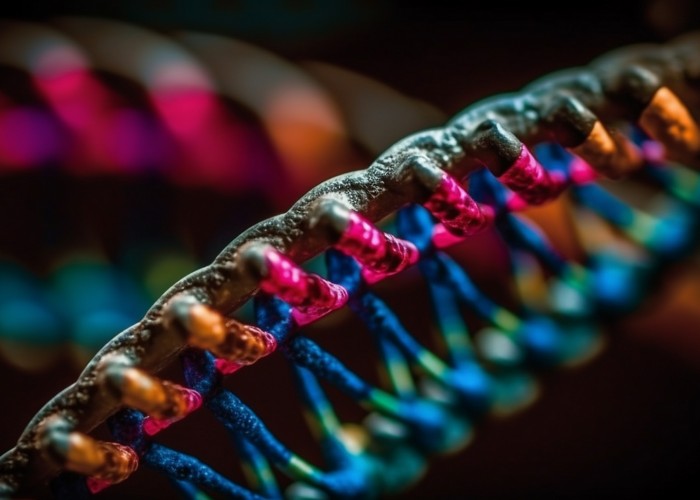Hypertension is linked to cardiovascular disease and an increased risk of myocardial infarction and stroke. Research shows that even a modest reduction in blood pressure can slash these risks by as much as a third.
Prevalence
Antihypertensive drugs are used in the treatment of high blood pressure.
Hypertension is linked to cardiovascular disease and an increased risk of myocardial infarction and stroke. Research shows that even a modest reduction in blood pressure can slash these risks by as much as a third.
According to the American Heart Association, there are more than 100 million Americans living with high blood pressure. That is almost half of all adult Americans.
In November 2017, the criteria for diagnosing patients as hypertensive was redefined. Previously, a patient had to read 140/80 on a sphygmomanometer. Now, that score has been reduced to 130/80 – meaning many more people now find themselves cast within the diagnostic net of hypertension.
The statistics surrounding cardiovascular disease, and its wider implications, are sobering:
- Over 34 million Americans have type 2 diabetes.
- Over 350,000 cardiac arrests occur outside the home each year.
- As of 2020, almost 40 percent of Americans are considered obese and 71.6 of adults aged 20 years and above are overweight.
- Almost 800,000 people will suffer from a stroke this year.
- Over 16 million people, aged 20 or older, are living with coronary artery disease.
And most pertinently:
- Between 2005 and 2015, there has been a 38 percent increase in the number of hypertension-related deaths.
Antihypertensive drugs have, then, never played a more important clinical role than now. Along with diet and exercise, they remain one of the most effective methods to reduce high blood pressure.
Antihypertensive Drugs Pharmacology
Antihypertensive drugs pharmacology is a broad medicinal church.
Some of the medicines reviewed below are no longer used as the first or second-line treatment options for hypertension. That said, these drugs still retain notable antihypertensive effects and may be used as add-on drugs in cases of treatment-resistant hypertension.
The TEN antihypertensive drug classes we review in this guide include:
- ACE inhibitors
- Angiotensin II receptor antagonists
- Diuretics
- Calcium channel blockers
- Beta-blockers
- Alpha-blockers
- Alpha-2 agonists
- Renin-inhibitors
- Vasodilators
- Endothelin receptor antagonists
Let’s begin.
ACE inhibitors
ACE inhibitors are among the most widely prescribed cardiovascular medicines.
Examples
- Ramipril
- Lisinopril
- Perindopril
- Captopril
- Fosinopril
Mechanism of Action
ACE inhibitors work by inhibiting the enzyme, angiotensin-converting enzyme (ACE); an enzyme found on the surface of pulmonary and renal epithelia. By blocking ACE, these drugs prevent aldosterone release from the adrenal cortex and eliminate sodium ions (along with water) from the kidneys. These two cumulative effects serve to reduce blood volume and blood pressure.
Side Effects
- Hypotension – first-dose hypotension is prevalent with ACE inhibitors
- Persistent, dry cough – due to pulmonary kinin accumulation
- Hyperkalemia – ACE inhibitors promote potassium retention
- Other – fatigue, nausea, dizziness, headache
Because ACE inhibitors cause hyperkalemia, patients should not be prescribed other potassium-elevating drugs or supplements.
Captopril contains a thiol moiety and so causes metallic taste.
Check out our complete ACE inhibitors pharmacology guide for more facts on this drug class.
Angiotensin II receptor antagonists
Angiotensin II receptor antagonists are also known as ARBs, or angiotensin receptor blockers.
They are sometimes used in place of ACE inhibitors, particularly in cases where a patient has developed an intolerably persistent cough.
Examples
- Candesartan
- Irbesartan
- Losartan
- Telmisartan
Mechanism of Action
Angiotensin-receptor blockers have a similar mechanism of action to ACE inhibitors.
Whereas ACE inhibitors block the conversion of angiotensin I into angiotensin II, ARBs work by blocking the action of angiotensin II at the AT1 receptor. Because angiotensin II promotes aldosterone secretion and acts as a vasoconstrictor, its blockage reduces peripheral vascular resistance and lowers blood pressure.
Side Effects:
- Hypotension
- Hyperkalemia
- Renal failure (as with ACE inhibitors)
- Cough – though less likely than with an ACE inhibitor
Due to the risk of hyperkalemia, other potassium-elevating drugs should not be prescribed. This includes potassium supplements, potassium-sparing diuretics.
As with ACE inhibitors, taking ARBs with NSAIDs increases the risk of renal failure.
Diuretics
Diuretics are drugs that promote diuresis, or water loss.
Diuretic drug classes include:
- Loop diuretics – furosemide, bumetanide, ethacrynic acid, torsemide
- Thiazide and thiazide-like diuretics – bendroflumethiazide, hydrochlorothiazide, indapamide, metolazone
- Potassium-sparing diuretics – amiloride, spironolactone, eplerenone, triamterene
- Osmotic diuretics – mannitol
- Carbonic anhydrase inhibitors – acetazolamide, dorzolamide
Thiazide diuretics are routinely chosen as first-line agents in the treatment of hypertension.
Diuretics eliminate excess sodium and water from the body. Some diuretic classes also eliminate potassium, increasing the risk of hypokalemia.
Other drugs though, such as amiloride and spironolactone, retain potassium ions – increasing the risk of hyperkalemia. However, diuretic combinations are invariably used to balance and offset these risks.
Diuretics act at different points along the nephron. For example:
- Loop diuretics act at the thick ascending limb
- Thiazide diuretics act at the distal convoluted tubule
- Potassium-sparing diuretics act at the cortical collecting duct
- Osmotic diuretics act at the proximal tubule
- Carbonic anhydrase inhibitors also act at the proximal tubule
Side Effects:
In general terms, side effects with diuretics include:
- Loop diuretics – hypovolemia, hypokalemia, metabolic alkalosis, hyperuricemia.
- Thiazides – all of the above, plus hypercalcemia
- Hyperkalemia – amiloride, triamterene, spironolactone.
Calcium channel blockers
There are two classes of calcium channel blockers – dihydropyridine and non-dihydropyridine. Dihydropyridine CCBs are routinely used first-line for the treatment of hypertension.
Dihydropyridines
- Amlodipine
- Nifedipine (safe in gestational hypertension!)
- Felodipine
Non-dihydropyridines
- Diltiazem
- Verapamil
Dihydropyridines are predominantly used to treat hypertension. All CCBs can be used to control symptoms in patients with stable angina. Nifedipine is also used as a tocolytic agent (labor suppressant).
Non-dihydropyridines are used to control heart rate in patients with supraventricular arrhythmias.
Mechanism of Action
Calcium channel blockers are one of the most important classes in antihypertensive drugs pharmacology – first-line agents in the treatment of high blood pressure.
Calcium channel blockers reduce calcium entry into vascular and cardiac cells – reducing intracellular calcium concentration which, in turn, causes relaxation and vasodilation in arterial smooth muscle.
Calcium channel blockers also reduce myocardial contractility in the heart and suppress cardiac conduction at the AV node. Reduced cardiac rate, contractility and afterload lower myocardial oxygen demand – preventing angina.
Dihydropyridines have greater selectivity for the vasculature in contrast to non-dihydropyridines which have greater selectivity for the heart.
Side Effects
Side effects with calcium channel blockers include:
- Flushing
- Headache
- Ankle swelling
- Palpitations
- Lightheadedness
- Cough
- Shortness of breath
- Constipation – most common with verapamil
Calcium channel blockers are also known to be a cause of drug-induced gingival hyperplasia (gum overgrowth).
In rare and serious cases, calcium channel blockers can cause bradycardia, heart block and cardiac failure.
CCBs should not be combined with beta-blockers except under specialist supervision as both drug classes are negatively inotropic and negatively chronotropic. Taken together, this can lead to heart failure, bradycardia, and asystole.
Beta-blockers
Beta-blockers are not first-line agents in the treatment of hypertension. However, they may be used in cases of treatment-resistant hypertension or as an add-on treatment option.
Examples:
- Metoprolol
- Bisoprolol
- Labetalol (safe in gestational hypertension!)
- Nebivolol
- Propanolol
- Timolol
- Betaxolol
- Carvedilol
Mechanism of Action
For hypertension, beta-blockers reduce renin secretion from the kidney – an effect ordinarily mediated by beta-1 receptors.
Recall that beta-1 receptors are located mainly in the heart, whereas beta-2 receptors are mainly located in the smooth muscle of blood vessels and the airways.
By reducing renin secretion, beta-blockers halt the cascade of effects that otherwise leads to hypertensive effects – such as the release of aldosterone.
Side Effects
- Fatigue
- Cold extremities
- Vivid dreams and nightmares
- Headache
- Nausea
- Hypoglycemia unawareness
- Bronchospasm
- Reynaud’s phenomenon
- Hypotension – including orthostatic hypotension
- Sexual dysfunction – including impotence in men
Vivid dreams/nightmares are more likely with lipophilic beta-blockers, such as propranolol and metoprolol which can more readily cross the blood-brain barrier
Alpha-blockers
Alpha-blockers may be used to treat hypertension in treatment-resistant cases where other drugs – such as ACE inhibitors, calcium channel blockers, or thiazide diuretics – have proven insufficient.
Examples:
- Alfuzosin
- Tamsulosin
- Doxazosin
Mechanism of Action
Alpha-1 receptors are mostly found in smooth muscle such as blood vessels or the urinary tract.
Stimulation of alpha-1 receptors produces contraction whereas inhibition causes relaxation.
Alpha-blockers are highly selective for the alpha-1 receptor, causing vasodilation and a reduction in blood pressure.
Side Effects
- Postural hypotension
- Dizziness
- Faintness
These three effects are more pronounced after the first dose.
Alpha-2 agonists
Like alpha blockers, alpha-2 agonists are infrequently used to treat hypertension – often in cases of treatment-resistant hypertension.
Alpha-2 agonists are typically prescribed alongside a diuretic drug.
Examples
- Clonidine
- Methyldopa (safe in gestational hypertension!)
- Moxonidine
Mechanism of Action
Alpha-2 agonists are classified as “centrally-acting alpha-2 agonists”.
These receptors are activated in the brain which, once activated, open peripheral blood vessels around the body, reducing blood pressure.
Side Effects
- Sedation
- Dry nasal mucosa
- Dry mouth
- Rebound hypertension
- Postural hypotension
- Headache
- Fatigue
Renin Inhibitors
Renin is a protein and enzyme secreted by the kidneys.
It works by cleaving angiotensinogen (hepatic-produced) into angiotensin I.
ACE then converts angiotensin I into angiotensin II and, in turn, angiotensin II causes increased secretion of aldosterone – increasing blood pressure.
Renin inhibitors are, then, an effective way to block the effects of angiotensin II and reduce blood pressure.
Example:
- Aliskiren
Mechanism: See above.
Side Effects
- Angioedema
- Hyperkalemia
- Hypotension
- Diarrhea
- Headache
- Dizziness
Aliskiren should not be taken alongside an angiotensin-receptor blocker or ACE inhibitor in diabetic patients due to an increased risk of stroke, hyperkalemia, and kidney complications.
Vasodilators
Sodium nitroprusside
Sodium nitroprusside has been used in cases of hypertensive emergencies. It is administered via the intravenous route and so has a rapid onset of effect.
Sodium nitroprusside releases nitric oxide to exert its antihypertensive effects. Nitric oxide works to reduce total peripheral resistance and venous return – reducing both preload and afterload.
Side effects with sodium nitroprusside include:
- Hypotension
- Methemoglobinemia
- Cyanide poisoning
- Bradyarrhythmia
- Palpitations
- Tachyarrhythmia
- Confusion
- Dizziness
- Renal azotemia
Hydralazine
Hydralazine is used to treat hypertension, though it is more often used to treat high blood pressure in pregnancy – gestational hypertension (other drugs used to treat gestational hypertension include labetalol, methyldopa, and nifedipine). Like sodium nitroprusside, it may also be used in hypertensive emergencies where symptoms from hypertension are present.
Side effects with hydralazine include:
- Headache
- Tachycardia
- Palpitations
- Hypotension
- Aching/swelling joints
- Flushing
It works as a direct-acting smooth muscle relaxant, working as a vasodilator in resistance arterioles – decreasing total peripheral resistance and lowering blood pressure.
Endothelin Receptor Antagonists
Bosentan is an example of an endothelin receptor antagonist used in the treatment of pulmonary arterial hypertension (PAH).
Bosentan works as a competitive antagonist at the endothelin-1 receptor. By blocking both forms of this receptor, ET-A and ET-B, bosentan reduces pulmonary vascular resistance – lowering pulmonary blood pressure.
Side effects with bosentan include:
- Hepatotoxicity
- Edema
- Reduced sperm count
- Reduced hemoglobin/hematocrit
- Headache
- Gastrointestinal effects
Bosentan is a potent teratogen and must be avoided in pregnancy.
That concludes our review of antihypertensive drugs pharmacology. Check back to our pharmacy blog soon for more exclusive content to help you master the science of drugs and medicines!





